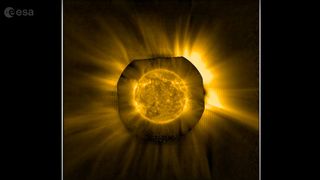the sun
Latest about the sun
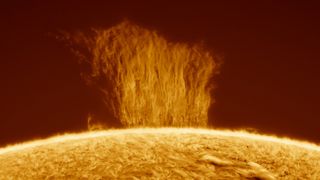
A once-in-a-lifetime view of the sun's 'solar maximum' is coming April 8th
By Jamie Carter published
With the solar cycle set to peak earlier than predicted, the sun's corona should look its spectacular spiky best for April 8's total solar eclipse.
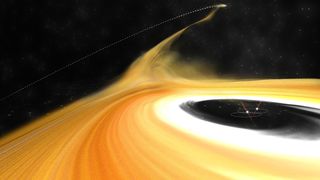
A 'runaway star' could save Earth from extinction a billion years from now. Here's how.
By Abha Jain published
Earth will become too hot to handle in a billion years. There's a (very) remote chance a passing star could save us by knocking our planet back into the habitable zone.
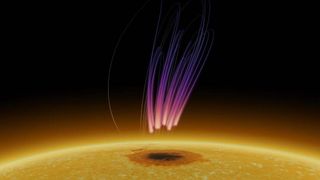
Astronomers spot aurora on the sun for the 1st time
By Ben Turner published
Scientists have spotted an aurora signal caused by electrons accelerating through a sunspot on our star's surface for the first time ever.
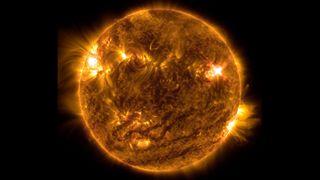
The sun may be smaller than we thought
By Stephanie Pappas published
New calculations suggest the sun is a few fractions of a percent smaller than previously estimated, and that could change how we study it.

Science news this week: The many faces of cats and an impending solar maximum
By Alexander McNamara published
Nov. 5, 2023: Our weekly roundup of the latest science in the news, as well as a few fascinating articles to keep you entertained over the weekend.
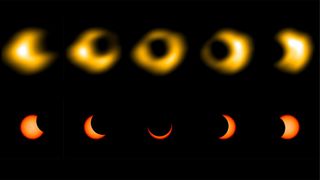
Space photo of the week: A radio 'ring of fire' shows a solar eclipse as never seen before
By Jamie Carter published
Radio astronomers in California imaged the sun's scorching hot corona for the first time ever during a partial solar eclipse on Oct. 14.
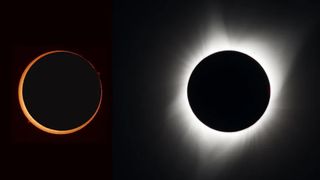
NASA will fire 3 rockets directly at the solar eclipse on Saturday. Here's why.
By Brandon Specktor published
NASA researchers plan to launch three rockets carrying scientific instruments toward the moon's shadow on Oct. 14, to study changes in the atmosphere brought about by the annular solar eclipse.
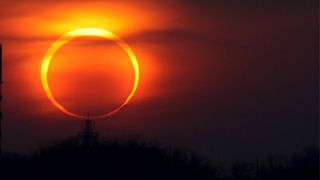
Exactly where and when to see the 'ring of fire' solar eclipse this weekend
By Jamie Carter published
A partial solar eclipse will be visible across most of the Americas on Oct. 14, with a rare 'ring of fire' annular eclipse visible in nine states.
Sign up for the Live Science daily newsletter now
Get the world’s most fascinating discoveries delivered straight to your inbox.

